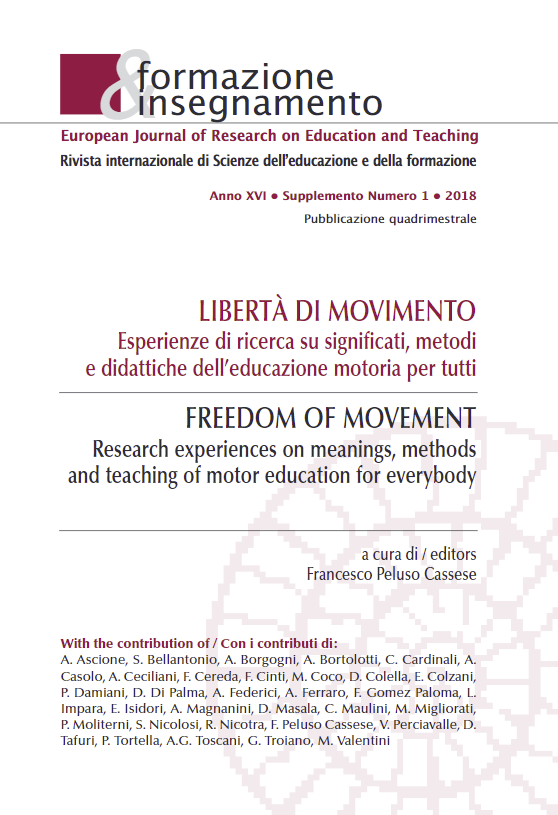Analysis of the impact of unstructured didactis on social communication
Abstract
In recent years, the world of scientific research has opened up to new scenarios of didactic intervention, in view of developing, since the pre-school period, social-communicative skills. In this regard, the evidence shows the importance
to the use of engaging, interactive, cooperative and experiential activities, that stimulate the natural desire for learning. A potential is recognized in them on the cognitive, relational, social and expressive level, because through this channel the child uses and perfects his verbal and non-verbal languages, creating the conditions for a better use and production of communication. The approach of Educational Neuroscience (EN) shows a clear framework of the links between social and relational competences on the one hand, and cognitive domains on the other, in a vision of didactic experience that shapes the processes underlying cognitive abilities. The Activity Based Intervention (ABI) is an approach used in early childhood programs to incorporate more effective teaching strategies
into a child’s daily activities, orienting a naturalistic teaching method that occurs in a usual context such as the preschool classroom. The use of the ABI approach has shown an increase in social competence following the incorporation
of social objectives within the educational program. The analysis of this work carried out a statisticalpsychometric comparison of verbal and non-verbal behavior, in children between the ages of 3 and 6, involved in structured and destructured teaching activities (museum education) to highlight the impact of the latter, in learning social skills and analyzing their differences.
Downloads
Published
How to Cite
Issue
Section
License
Copyright (c) 2018 Luisa Bonfiglio, Giulia Torregiani, Francesco Maria Melchiori

This work is licensed under a Creative Commons Attribution 4.0 International License.
Formazione & insegnamento is distributed under Attribution 4.0 International (CC BY 4.0).
For further details, please refer to our Repository & Archiving Policy, as well as our Copyright & Licensing Terms.





